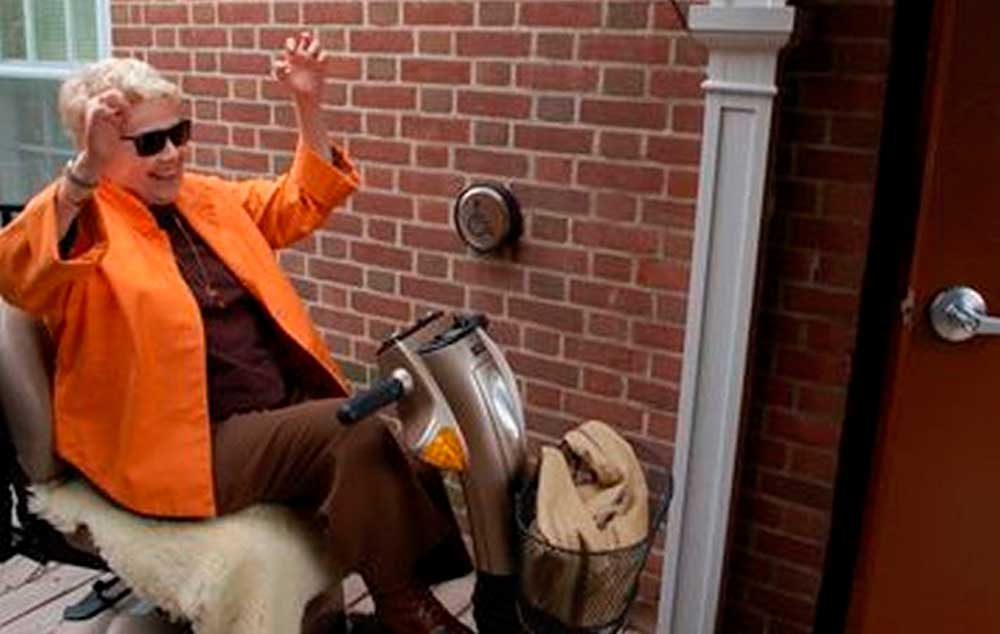Riding into RiverBrink Art Museum, Linda Crabtree had a few words to mark the occasion.
“It’s good to be back.”
The St. Catharines-based art lover and accessibility advocate admits she hadn’t been to the museum in a long time. With no wheelchair access, Crabtree — who gets around in an electric scooter — had no access to the building. On Thursday afternoon that all changed when she became the first person to wheel her way up the newly installed wheelchair-accessible ramp and through the push-button controlled entrance. With widened doorways inside the gallery, Crabtree was able to easily maneuver her way through the 30-year old museum and right up to the new touchscreen viewing station that allowed her to electronically explore the upper and lower levels of the gallery.
The new features are just phase one of the museum’s planned accessibility improvements. The first phase included construction of the ramp and a landing pad complemented by a concrete parking pad for offloading wheelchairs and other mobility aids. The automatic door was added to the side entrance and the doors from reception into the main exhibition spaces on the main floor were widened as well.
Director/curator David Aurandt said this is just the beginning.
“We are not done yet,” he told the gathered crowd on Thursday of the museum’s accessibility improvements. “This is just the first part of an ongoing commitment to make the whole building much more accessible.”
Aurandt said there are unique challenges that arise when attempting to make these changes to an older building, which means some projects may take longer than others.
Future plans include the design and retrofit of main level washroom to full accessibility standards and the installation of an elevator to allow physical accessibility to all three floors of the museum.
While there’s no elevator yet, visitors with mobility issues can still view exhibits on the upper and lower floor thanks to a virtual gallery station. The result of brainstorming by RiverBrink staff and volunteers and the work of summer intern Justin Engel, the station allows users to take a virtual tour of the upper and lower levels. Going room by room, the user can zoom in on artwork or displays and listen to the narrated guide.
“You can go to any room you want in the museum and look at each item individually,” said Engel, noting people can use the keyboard, mouse or touchscreen to navigate the program.
Funding for phase one kicked off in the fall of 2011 with a black and white gala organized by volunteers. That event brought in $7,000 in private dollars, prompting the formation of the RiverBrink Accessibility Fund, further bolstered by additional private funds, grants and fundraising.
Source: Niagara this week



